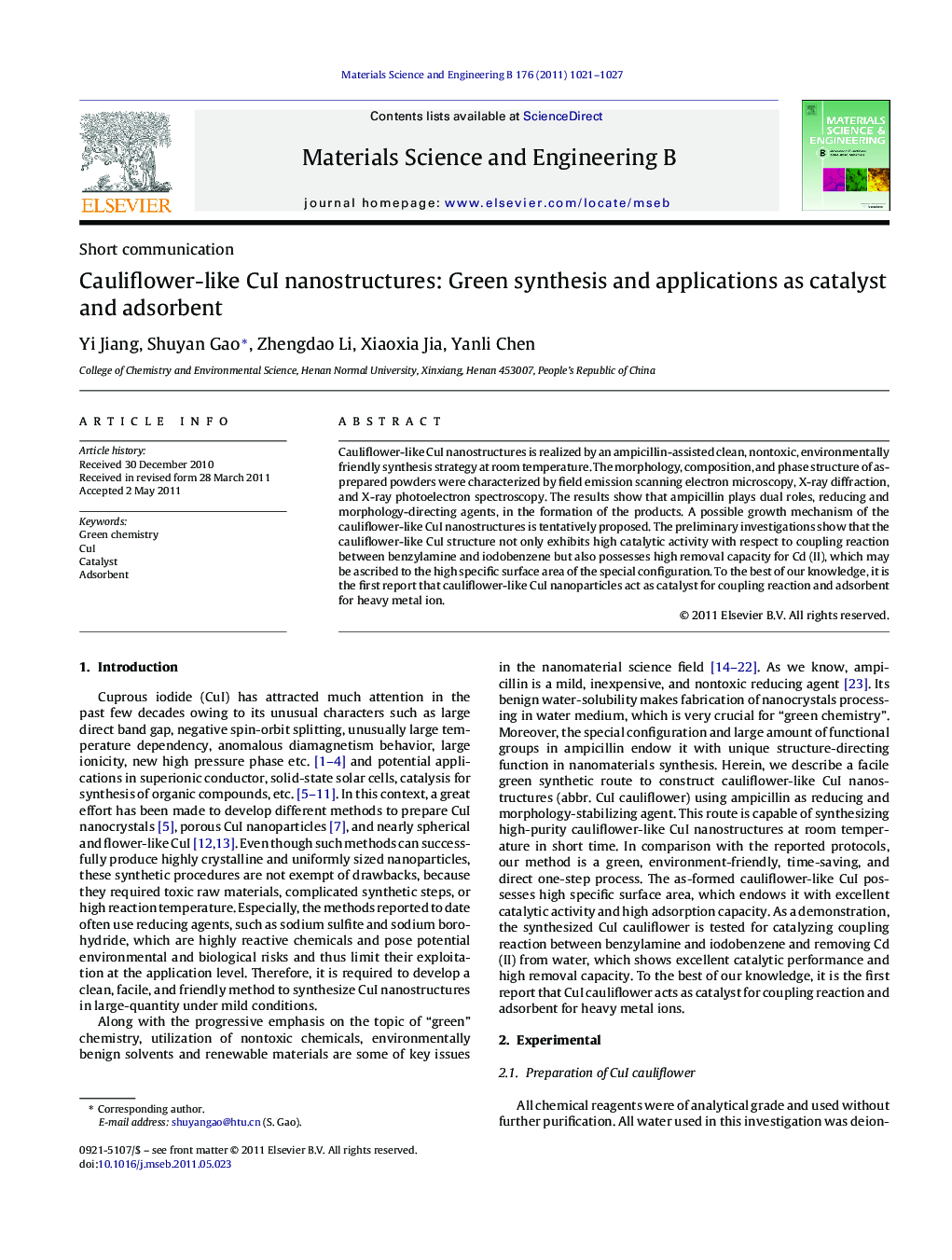| Article ID | Journal | Published Year | Pages | File Type |
|---|---|---|---|---|
| 1529976 | Materials Science and Engineering: B | 2011 | 7 Pages |
Cauliflower-like CuI nanostructures is realized by an ampicillin-assisted clean, nontoxic, environmentally friendly synthesis strategy at room temperature. The morphology, composition, and phase structure of as-prepared powders were characterized by field emission scanning electron microscopy, X-ray diffraction, and X-ray photoelectron spectroscopy. The results show that ampicillin plays dual roles, reducing and morphology-directing agents, in the formation of the products. A possible growth mechanism of the cauliflower-like CuI nanostructures is tentatively proposed. The preliminary investigations show that the cauliflower-like CuI structure not only exhibits high catalytic activity with respect to coupling reaction between benzylamine and iodobenzene but also possesses high removal capacity for Cd (II), which may be ascribed to the high specific surface area of the special configuration. To the best of our knowledge, it is the first report that cauliflower-like CuI nanoparticles act as catalyst for coupling reaction and adsorbent for heavy metal ion.
► In this study we report a green, environment-friendly, efficient, and direct one-step process for the preparation of CuI cauliflower. ► The as-formed CuI cauliflower shows excellent catalytic activity for coupling reaction between benzylamine and iodobenzene. ► The cauliflower-like CuI nanostructures have been successfully demonstrated as adsorbent for Cd (II) with high removal capacity. ► To the best of our knowledge, it is the first report that nanostructured CuI acts as catalyst for coupling reaction and adsorbent for heavy metal ion. ► It is also a good example for the organic combination of green chemistry and functional materials.
